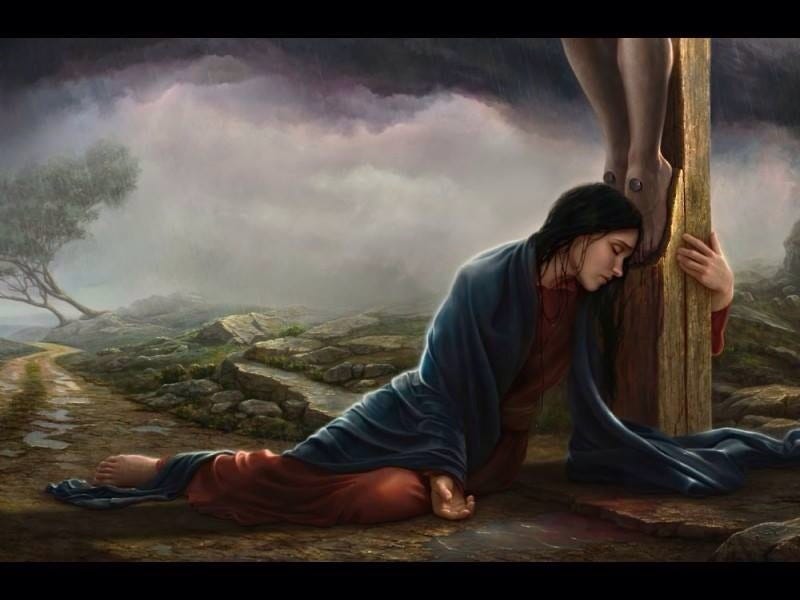The Purpose of The Dove and Rose as receiving St. Mary Magdalene
The “undisclosing” of the flower that is the Magdalene gestalt
In our development of the model thus far, The Dove and Rose experiences herself as a speciation of the royal genus of the House of New Bethany as represented in the gestalt of Mary Magdalene. This speciation is an experiential, even existential, encounter received phenomenologically. A hermeneutical spiritual journey follows in the footsteps of Joan of Arc under her careful celestial patronage. We are led into Joan’s field of spiritual vision whereby we discover her noematic horizon of meaning. We embrace this horizon as our own through empathic devotion to her. Through grace this empathy becomes a sharing in Joan’s stream of experiences (Reference Edith Stein’s concept of empathy in The Curious Case of Collective Experience: Edith Stein’s Phenomenology of Community and a Spanish Fire-Walking Ritual by Timothy Burns). It is a sharing in Joan’s mode of being:
“In either case, one spirit, by joining with another, comes to share in the other’s mode of being.”
~ Edith Stein. Potency and Act (The Collected Works of Edith Stein) (Kindle Location 2064). Kindle Edition.
We entered this relationship of meaning with Joan, described at times as a union of hearts, through the intuitive experience of an “unreflective certainty” of her being-as-meaning to us:
“This certainty of being comes before all knowledge. It does not mean that everything else is to be logically deduced from it -as from a principle-, nor that it is the criterion upon which all else is to be measured. It is rather a starting point behind which we cannot get further back. The certainty of being is an unreflective certainty, and it precedes all our rational knowledge.”
~ Edith Stein. Potency and Act (The Collected Works of Edith Stein) (Kindle Locations 481-484). Kindle Edition.
We knew from the unreflective certainty of Joan’s being-as-meaning to us that meaning confronted us. We simply did not know at the experiential instant what this meaning meant. It was “meaning without understanding.” The intuitive certainty of Joan’s being-as-meaning to us “preceded all our rational knowledge.” The unreflective certainty held within itself the questions required to understand it. The questions held within defined the pathway for the spiritual journey. As the journey unfolds, the questions are revealed in a hermeneutic of continuity, just as the gestalt beauty of a flower is revealed through the unfolding of petals revealing what is within.
Three necessary questions constituted the hermeneutical spiritual journey:
What does it mean that something is meaningful? (What is meaning?)
What does the meaning we have received mean? (What is it that we received as meaning?)
What is the meaning of the meaning? (What is the purpose of our receiving this meaning?)
The first was answered as that which brings itself to the higher echelon of our intentionality, that which we desire, and that toward which we direct our volition. We defined meaning as “intentionality of desire and volition.” This is ontological in nature.
The second was answered as relationships of meaning organized categorically by a directed noematic syntax leading to a pre-ordained gestalt expression. This is phenomenological in nature.
The third was answered as the resulting gestalt taken to be the actualization of the grace received in the unreflective certainty, now a sharing in the mind of Christ, thus reflecting Our Lord and Our Lady’s will, the working out of which we merit as working in the father’s vineyard (Matthew 25:14-30).
The final expression revealed in the third question was St. Mary Magdalene on the shores of Provence as the visible manifestation of the yet still partially undisclosed celestial gestalt. As Joan’s heart is the manifestation of being leading our inquiry, Magdalene’s heart is the manifestation of being constituting our resulting gestalt of France.
In his writing on St. Mary Magdalene, Henri-Dominique Lacordaire, OP reveals:
“Jesus Christ had left his Mother to Jerusalem, St. Peter to Rome, St. John to Asia; to whom would he bequeath Mary Magdalene?
We already know: it was France that received from the hand of God that part of the testament of His Son. Tradition, history, and the monuments vied with each other to tell us, and Providence took care to give their testimony invincible clarity. One cannot set his foot on the soil of Provence without striking the memory of St. Mary Magdalene.”
~ Henri-Dominique Lacordaire, OP, The Life of St. Mary Magdalene, translated by George Christian, OP, Dominican Friars, Province of St. Joseph USA. 2015.
Adding to the beautiful narrative above, Bishop William George McClosky describes Mary Magdalene’s heart as she suffered at the foot of the cross – the Magdalene heart that later graced the shores of Provence. He describes Magdalene speaking to our crucified Lord after He gave Our Lady to St. John as follows:
“And, oh best and dearest of Masters, what shall I do without thee? To whom do you commend me? Who will take of me? Who will console me in my deep sorrow at losing Thee?”
~ BP. William George McClosky, The Life of St. Mary Magdalen, Louisville KY, The Bradley and Gilbert Company. 1900.
These reflections are a type of “undisclosing” of the flower that is the Magdalene gestalt which reveals the final purpose of our journey and our entry into the Kingdom of France in the center of the Immaculate Heart of Mary. That purpose is to receive Mary Magdalene on the shores of Provence from Christ who bequeaths her to us - to receive the heart of Magdalene France, to take care of her, and to console her at the foot of the cross and beyond.



